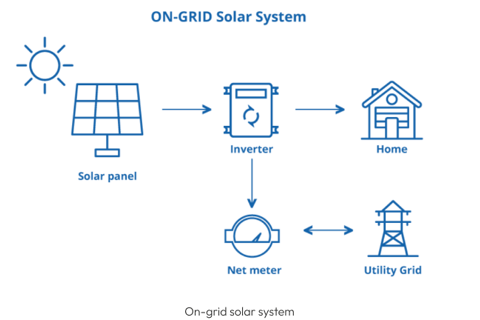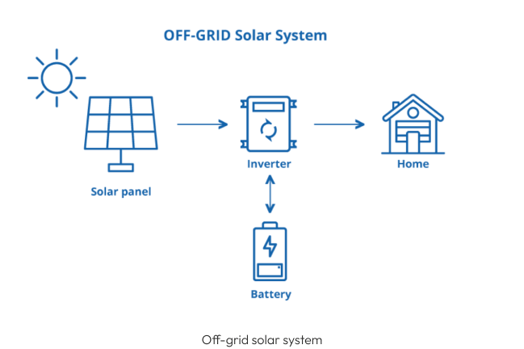Let's learn about types of Solar Panel Systems
What's right for you...
6/22/20252 min read
What is an on-grid solar system?
An on-grid solar system, or grid-tied system, uses photovoltaic panels to generate solar energy, which is directly integrated with the local electricity grid. It enables users to power their homes or businesses with solar energy while relying on the grid for backup. Excess energy produced can be fed back to the grid, often earning credits through *net metering programs, though the application of net metering varies based on each state's policy.
Here’s how it works:
* Solar panels: Photovoltaic panels capture sunlight and convert it into direct current (DC) electricity. These panels are typically installed on rooftops or open areas with abundant sunlight.
* Inverter: The DC electricity generated is sent to an inverter, which converts it into alternating current (AC) electricity to power appliances and devices.
* Electrical service panel: The AC electricity flows into the building’s main electrical panel, ensuring a consistent power supply.
* Net metering: Any excess electricity is sent back to the grid through a bidirectional net meter. This system credits users for surplus energy, effectively reducing their electricity bills. However, it is important to note that the application of net metering changes as per each state's policy.
* Grid backup: When there is insufficient solar energy, the system draws power from the grid, ensuring uninterrupted electricity.
Advantages of on-grid solar systems
* Integrated with the grid: On-grid systems use the local grid as a virtual battery, eliminating the need for costly energy storage.
* Earn through net metering: Surplus energy can be sold back to the utility provider, providing financial benefits. Although, the application of net metering changes as per each state's policy.
* Consistent energy supply: These systems ensure a steady power supply by drawing from the grid during low sunlight periods.
* Affordable installation: The absence of batteries reduces initial investment costs, making it an economical choice.
* Environmentally beneficial: Sharing excess renewable energy with the grid reduces dependency on fossil fuels, lowering the carbon footprint.


What is an off-grid solar system?
An off-grid solar system functions independently from the utility grid, using solar panels and battery storage to generate and store electricity. These systems are ideal for remote areas or locations with unreliable grid access. Equipped with inverters and charge controllers, they ensure a stable power supply, thus reducing reliance on fossil fuels for sustainable living.
Here’s how they function:
* Solar panels: Similar to on-grid systems, photovoltaic panels capture sunlight and convert it into DC electricity.
* Charge controller: The electricity flows to a charge controller, which regulates and stores excess power in a battery bank for later use.
* Battery bank: The battery bank stores energy for use during nighttime or overcast conditions, ensuring a continuous power supply.
* Inverter: The stored DC electricity is converted to AC when needed to power appliances.
* Distribution panel: The AC electricity is distributed to electrical loads, powering devices, and appliances even in remote locations.
* Electricity backup: In areas with high energy demands or limited solar output, backup energy storage solutions can be integrated to provide additional support.
Advantages of off-grid solar systems
* A reliable energy solution: These systems eliminate reliance on the utility grid, ensuring power even during outages.
* Perfect for remote locations: Perfect for locations where connecting to the grid is impractical or expensive.
* No utility costs: Off-grid systems free users from recurring utility costs, offering long-term savings.
* Reliable during outages: Provides a reliable power supply during natural disasters or grid failures.


